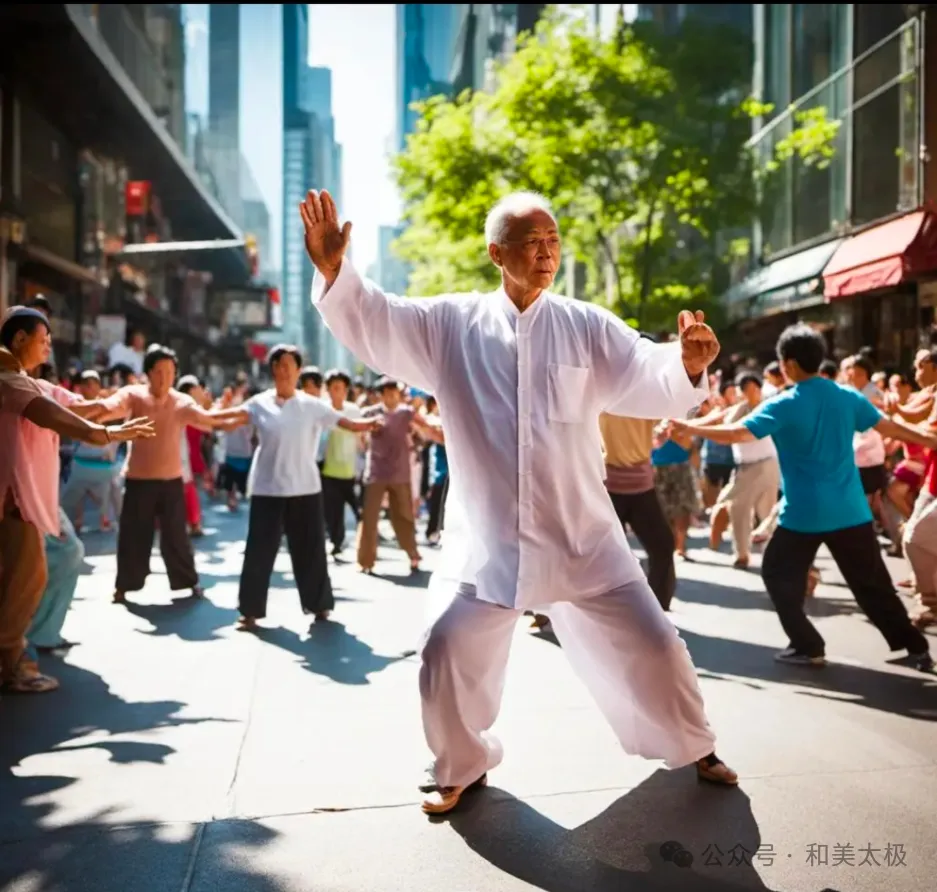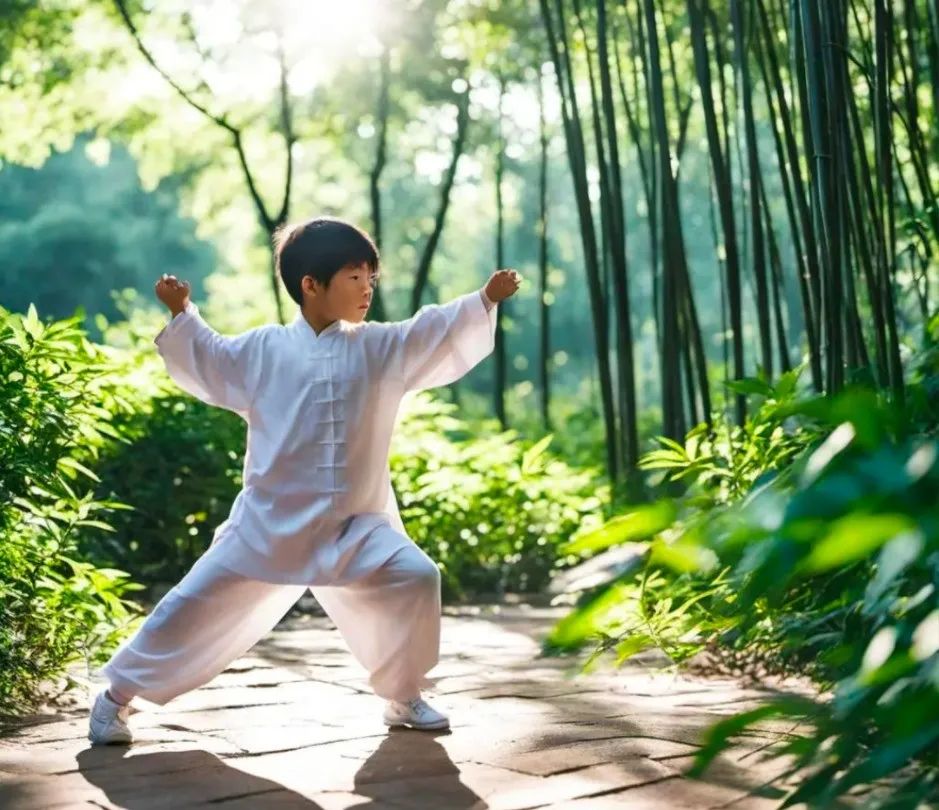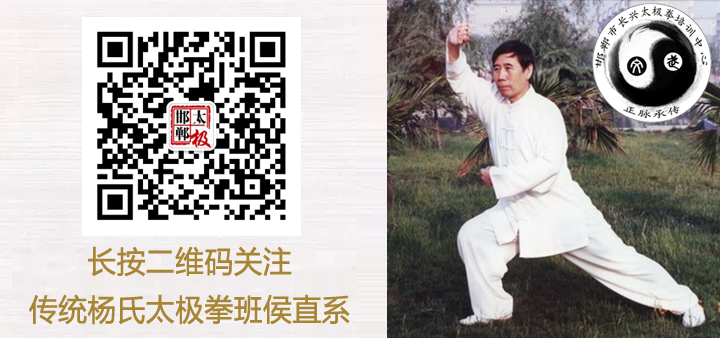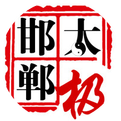
Nowadays, more and more people practice Tai Chi, but the trend of making it more like a performance or dance has diluted its true meaning. As various forms of routines are learned and competitions become the focus, practitioners often gain superficial skills while losing the fundamental essence of Tai Chi. Over the years, the explanations of the term “Tai Chi” have become increasingly complex, ranging from hundreds to thousands of words, yet they often leave people confused. How can we strip away the mysterious facade of Tai Chi and explain its meaning in the simplest terms? A profound statement is: “Tai Chi is Qi (气).” It is also said: “To practice Tai Chi well, one must first cultivate Tai Chi Qigong.” This indicates that Tai Chi refers to Qi, specifically the original Qi (元气) or internal Qi of the human body, and more precisely, it refers to the skill of controlling this original Qi. The mother of Yin and Yang in Tai Chi theory refers to the original Qi within the human body. The movement of original Qi generates Yin and Yang; only by mastering the transformation of Yin and Yang can one truly practice Tai Chi. In simpler terms, Tai Chi is a form of Qigong, and it is the highest level of Qigong. General Qigong focuses on cultivating Qi, while Tai Chi emphasizes cultivating intention (意), guiding internal Qi through intention to move the entire body. Tai Chi is a perfect combination of intention, Qi, and form. Based on the insightful discussions of predecessors, we can conclude:What is Tai Chi: Tai Chi is Qigong.What is Tai Chi Chuan: A martial art that uses intention to lead Qi and Qi to move the body. Having said all this, how is the statement “The mystery of Tai Chi is embodied within yourself” manifested? As the saying goes, “A person lives by a breath,” this breath refers to the original Qi that sustains our life, which is generated in the kidneys and stored in the Dantian (丹田). The lower abdomen’s Qihai point (气海穴) is the ocean of original Qi, while the Guanyuan point (关元穴) is where the original Qi is contained, generally referring to the Dantian. In daily life, original Qi circulates within the body to ensure the continuation of life, but this circulation is very slow. Tai Chi Qigong uses our intention to command the original Qi within the body, allowing the Qi to obey our will, stimulating the movement of the entire body and limbs to perform beautiful and intricate Tai Chi forms. Specifically, Tai Chi Qigong is generated from the movement of the Dantian, which is synchronized with the breathing of the lungs, but they are not the same. The inward movement of the Dantian corresponds to inhalation (Yin), gathering the body’s original Qi into the Dantian; the outward movement of the Dantian corresponds to exhalation (Yang), where the original Qi is released from the Dantian to the entire body. Therefore, the breathing in Tai Chi is consistent with Yin and Yang. Thus, the mystery of Tai Chi is revealed; it lies at the center of our body—the Dantian. The driving force for practicing Tai Chi comes from the original Qi within the Dantian, which transforms Yin and Yang, determining the movements of the torso and limbs, all accomplished through the guidance of intention. The best feeling in Tai Chi is the unity of heaven, earth, and humanity. Taking the initial movement as an example: during inhalation in the mind, one draws the earth’s Qi from the Yongquan point (涌泉穴) and merges it with the original Qi within the body, rising with intention, elongating the spine segment by segment. The subsequent feeling is to sink the chest and lift the back, with a light head and neck, allowing the Qi to reach the Baihui point (百会) before transitioning to exhalation. Intention merges the cosmic Qi with the original Qi, descending from the Baihui, then sinking the shoulders and dropping the elbows, relaxing the waist and sinking the hips, with the Qi settling in the Dantian, while the turbid Qi sinks into the soles of the feet. The internal and external integration of Tai Chi not only refers to the merging of original Qi with movement but also importantly signifies the exchange of Qi between the internal and external environment, inhaling external Qi energy and exhaling internal turbid Qi. It is evident that all movements in Tai Chi revolve around the Dantian, and the mystery is both simple and complex. The simple aspect is merely the actions of inhalation and exhalation or Yin and Yang. The complex aspect is that it is a form of Qigong that is difficult to master, requiring a process of perceiving and controlling original Qi for personal use. How to practice Tai Chi Qigong, or how to embody the mystery of Tai Chi within oneself? According to the experiences of various Tai Chi schools, the most straightforward and effective method is through standing meditation (站桩), such as the Hundred Days Foundation Practice (百日筑基功), Wuji Zhuang (无极桩), and Tai Chi Zhuang (太极桩). In fact, accepting Tai Chi Qigong is more challenging than mastering it; enhancing one’s understanding is key to practicing Tai Chi well, and success requires significant effort and a process of insight. This depends on the depth of each individual’s connection with Tai Chi.Practitioners of Tai Chi are often averse to being told they are practicing Tai Chi exercises, as Tai Chi exercises are a necessary stage in the journey of Tai Chi, representing its beginner phase. If one is only satisfied with the beginner stage and does not wish to improve further, then what they practice will always be at the level of Tai Chi exercises. Tai Chi emphasizes the internal over the external; the internal refers to Tai Chi itself, while the external refers to the movements. If one only focuses on the movements, they will never grasp the profound essence of Tai Chi, nor will they experience its miraculous health benefits. Tai Chi is the foundation and core of Tai Chi Chuan. The process of practicing Tai Chi is essentially the process of standing meditation in motion. Through long-term practice of Tai Chi Qigong, our body transforms into a small Tai Chi, where the original Qi in the Dantian, under the guidance of intention, rotates and flows in accordance with the transformations of Yin and Yang, continuously moving up and down, left and right, driving the body and limbs to complete various Tai Chi forms. Reaching this level signifies that you have entered the stage of understanding Jin (劲). The magic of Tai Chi Qigong lies in its ability to participate in the redistribution of energy within the human body, altering the flow of energy through Qigong. Where there is pain, the meridians can be unblocked, allowing energy to reach the source of the ailment, bringing oxygen and fresh blood, replacing the infected blood with new, causing inflammation to disappear, and resolving stagnation in areas of blood stasis. This is the principle behind the healing effects of Tai Chi Qigong. Once the body becomes a small Tai Chi, it should develop into a Tai Chi lifestyle, especially as one ages and various ailments arise. At this point, you can use Tai Chi Qigong for self-repair, unblocking the small circulation (小周天) to alleviate lower back and cervical pain, and unblocking the large circulation (大周天) to treat ankle, knee, and hip joint pain. Wherever there is pain in the body, direct the original Qi there; where intention goes, Qi follows; where Qi goes, blood follows; where blood goes, illness is eliminated. At this moment, you will realize that the mystery and magic of Tai Chi are embodied within you. Beginners in Tai Chi should ultimately start with the physical postures, and through prolonged practice, they will come to understand Jin, inevitably seeking the truth and the source, integrating and comprehending, thus stepping into the realm of the divine. The myriad transformations of movement and stillness do not depart from the root; the phenomena of wind, rain, thunder, and lightning are all manifestations of true skill.
Beginners in Tai Chi should ultimately start with the physical postures, and through prolonged practice, they will come to understand Jin, inevitably seeking the truth and the source, integrating and comprehending, thus stepping into the realm of the divine. The myriad transformations of movement and stillness do not depart from the root; the phenomena of wind, rain, thunder, and lightning are all manifestations of true skill.

For any copyright issues, please contact the original author through the backend.The articles published are for learning and reference only.Please practice under the guidance of a professional teacher.

Official website: http://www.yunshuiwang.com



